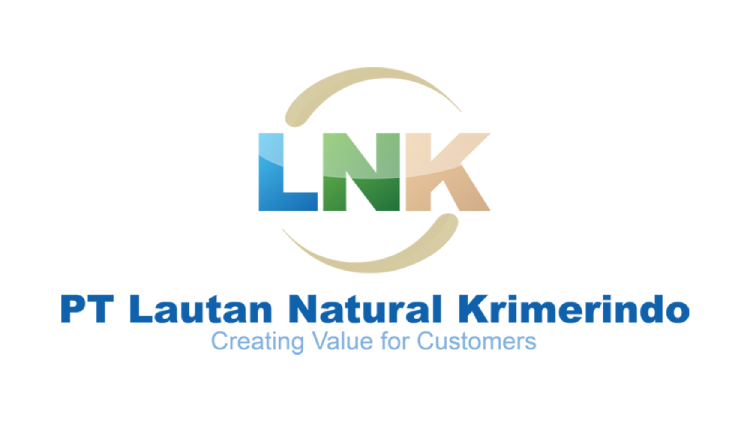Promotional Features
Trust your gut: What’s next for the food industry as told by consumers’ gut health
Most people have been heavily associating the term gut health only with gastrointestinal conditions. Gut health, however, has begun to take on a new meaning in the past few years along with the increasing number of consumers becoming more aware of their health and wellness.
In the midst of lifestyle changes, gut health is known to be one of the most important keys in maintaining overall health. As shown by a EuroMonitor International survey in 2020, about one-quarter of consumers globally are suffering from issues related to gut health with half of the reported cases are claimed to affect the consumers’ health in general.1
Low fiber intake contributes to poor gut health
There are various things that lead to gut health issues, but lack of fiber always comes at the top of the list. Unfortunately, low fiber consumption is currently a worldwide phenomenon with only 9% of adults from around the world getting an adequate amount of fiber daily.
In addition to gut health problems like constipation, low fiber intake in the long term will also increase the risks of obesity, diabetes, and various cardiovascular diseases – health concerns that in the near future will contribute to the highest fatality rates around the world.
Determined to lead the charge in the waging war against these gut health issues and overall health risks, Hendrik Gunawan as the CEO of LNK came up with a new and innovative ingredient that can be utilized by manufacturers to create healthier products. “Too many companies focus solely on profitability and not on what the market demands,” Hendrik says of the ingredient, which has been widely introduced as FiberCreme.
Through its research and development team, LNK is focusing on harnessing the full potential of dietary fiber with FiberCreme, as it aims to reinvigorate the market. Processed in a state-of-the-art spray dryer, the product provides pleasing sensory attributes that differentiate itself from other dietary fiber sources and consequently add greater sensory experience when applied to food and beverage products, supplements, powders, etc. Additionally, FiberCreme is well tolerated and backed by clinical studies that confirm its health benefits.
FiberCreme has also been granted US patent and Indonesian patent, while being continually used in clinical studies which includes in-vitro as well as in-vivo studies.
Decoding the potential of dietary fiber
But how exactly is dietary fiber working to improve one’s gut health and their well-being in general?
A human body is a home to millions of microbiota that consists of a diverse array of microbes, including good bacteria. Most of them live in the digestive tract and positively affect a human’s metabolism, immune system, and overall health.
Some of the bacteria beneficial for gut health are Bifidobacterium and Lactobacillus which relieve constipation, prevent diarrhea, and reduce intestinal inflammation. High concentration of Bifidobacterium can even reduce the risk of obesity, while the low concentration of it increases risk of intestinal inflammation. Meanwhile, Lactobacillus plays an important role in reducing acidity in the gut, suppressing the growth of pathogenic bacteria.
The amount and composition of the microbiota can change depending on genes, ages, stress levels, and other environmental factors like each individual’s eating habits. The microbiota, however, can be modulated through consumption of high-fiber foods or prebiotic sources.
Prebiotics themselves are substances selectively fermented in the gut to accelerate changes in the microbiota composition or activities to give more benefits for the gut health. Not all dietary fibers can be classified as prebiotics, but nearly every type of prebiotic can be classified as dietary fiber.
Conventionally, prebiotic dietary fibers are available in abundance in fruits and vegetables. But the never-ending innovation in the food industry has also made it possible for consumers to gain prebiotic dietary fibers in the form of multi-purpose fiber ingredients like FiberCreme, which according to an in vitro study is shown to have positive prebiotic activity scores. It means, FiberCreme can be used to modulate the growth of good bacteria in the digestive tract and help promote gut health.
Dietary fibers, especially the soluble ones, are also beneficial for weight management purposes as it can increase satiety and can be beneficial in helping to control obesity levels. Moreover, soluble fibers lower cholesterol levels by binding to it within the small intestine. Once it is inside the small intestine, the fiber attaches itself to cholesterol particles, preventing them from entering the bloodstream and later disposing the particles from the body through feces.2
Teeming with options
In the dietary fiber industry, manufacturers are often faced with a wide array of options from the likes of inulin, polydextrose and galactooligosaccharides (GOS). While the limitless options are a reflection of the exponential growth of the market, they can also present a challenge for manufacturers who are new in the dietary fiber market.
As most types of dietary fiber provide similar fiber content with similar benefits such as prebiotics, it can often be difficult to tell which type of fiber is the best and which one is applicable for certain applications. Inulin, for example, is the most common dietary fiber ingredient and most likely to be used among manufacturers. However, inulin has quite low tolerable dosage amount and rapid fermentation rate which lead to a higher risk of bloating, abdominal cramping and gas release.
Polydextrose, on the other hand, is a type of dietary fiber that is popular in the Asia-Pacific regions. But it’s a synthetic compound that is often listed with an E-number, meaning it’s identified as additives. Meanwhile, GOS are lactose-derived and have a strong presence in the dairy application. But the products made with the ingredient will of course contain lactose allergen, which is unsafe for those who are lactose intolerant.
As other common challenges regarding the use of dietary fiber also revolve around the issue of maximum tolerated dose, organoleptic profile, and published clinical studies that can verify the health claims, FiberCreme comes as a solution that solves all these issues.
It has a high maximum tolerated dose of up to 50g/day which significantly reduces the risk of gastrointestinal issues. Additionally, it enhances the organoleptic profile by increasing creaminess and sweetness level, making it suitable for sugar reduction purposes.
The rise of high-fiber products in post-pandemic market
Following the pandemic, consumers have become more aware of their health and thus become more selective about the ingredients being used in the products they consume. This drives the demand for a wide range of healthier products, including ones that contain high fiber.
In addition to being used in gut health-related products like yogurt, these days fiber has also been used in a wide range of applications such as fruit juices, meal replacements, sports nutrition supplements, as well as baked goods and pastries. In fruit juices, for example, fiber is added to replace the fiber lost during the processing of fruits. In meal replacement products, fiber will induce satiety which is beneficial for weight management purposes.
Through FiberCreme, LNK intends to contribute to the growing demands of dietary fiber in different applications by providing a unique solution that can cater to the needs of manufacturers while filling in the gap of the current dietary fiber options.
If you are interested in learning more about how FiberCreme can add value to your products, you can contact us through our website. Read also several whitepapers about FiberCreme developed for different applications:
Yogurt - https://www.business.fibercreme.com/yogurt/
Meal Replacement - https://www.business.fibercreme.com/meal-replacement-2/
Fruit Juice - https://www.business.fibercreme.com/fruit-juice/
LNK will also be taking part in the upcoming Food Ingredients FiAsia exhibition on the 7th-9th of September 2022 in Jakarta, Indonesia. If you would like to visit our booth or get in touch with us, you may contact us through znexrgvat@yax.pb.vq
References:
1. Katharina B (2020). The Rise and Potential of Gut Health. Euromonitor International.
https://www.euromonitor.com/article/the-rise-and-potential-of-gut-health
2. Yustinus Marsono, Rhaesfaty Galih Putri and Elizabeth Desy Arianti (2020). The Effects of Replacement of Dietary Fiber with FiberCremeTM on lowering serum glucose and improvement of lipid profile in Hypercholesterolemia-Diabetic Rats and Its Mechanism. Pakistan Journal of Nutrition.

